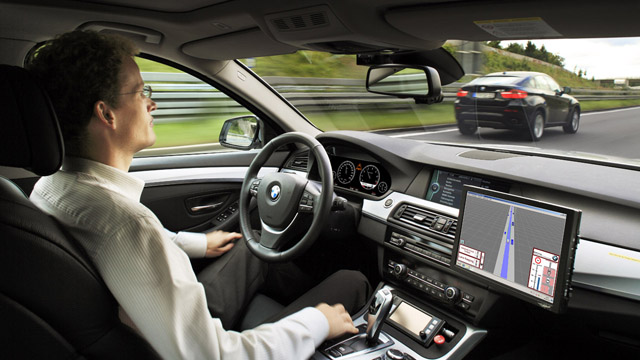
Mark Fields, Chief Executive Officer of Ford Motor Co., speculates that manufacturers will introduce self-driving cars very soon, but his company won’t be the first one to do so since it’s currently developing more affordable driver assistance features.
“Fully autonomous vehicles are a real possibility,” said Fields during the Consumer Electronics Show in Las Vegas yesterday. “Probably, in the next five years, you’ll see somebody introduce autonomous vehicles.”
The development of the first-ever mass-produced self-driving car has turned into an arms race of sorts, as multiple automakers are rushing to build their first model. In fact, during that same Las Vegas event, Daimler AG CEO Dieter Zetsche showcased a self-driving concept from Mercedes-Benz – the F 015. Its cabin has four seats that can rotate to form a lounge-like area, while retaining the option for manual driver control. Additionally, six screens, which utilise eye-movement technology, let passengers observe the information pertaining to the vehicle and its surroundings.
Audi is another automaker that’s developing a self-driving car – with its autonomous A7 successfully completing the 560-mile trip from Los Angeles to Las Vegas to attend the electronics conference.
Ford, on the other hand, is looking to make the technology more financially accessible, offering it even to buyers who can only afford an economy car, says Fields. This means that Ford’s vehicles may not be fully autonomous, but they will offer features like automatic parking as well as the ability to automatically steer the vehicle back into its lane and brake to prevent collisions.
According to Ford’s product development chief Raj Nair, consumers can get a Ford Focus that can park itself right now. The base Focus costs $16,449, which is relatively low, given the vehicle’s pedigree.
“If you to go to the full extreme – full autonomy – literally a vehicle that has no steering wheel and has no pedals, that’s a tremendous technical challenge, but one that we believe that in the next five years will be possible,” he said.
Fields points out that the main problem with this kind of technology is the fact that government regulators are not ready to solve the legal issues that may arise when it is widespread. However, he added that Ford is already working with governments to prepare for the autonomous future.
Google has helmed this revolution, with its self-driving version of the Toyota Prius becoming the first autonomous vehicle in North America. Google revealed a fully functional prototype of its self-driving vehicle on December 22, 2014, which it plans to test on San Francisco Bay Area roads at the beginning of this year.
You can learn more details on the history of autonomous vehicles in this article.
Source: Bloomberg






